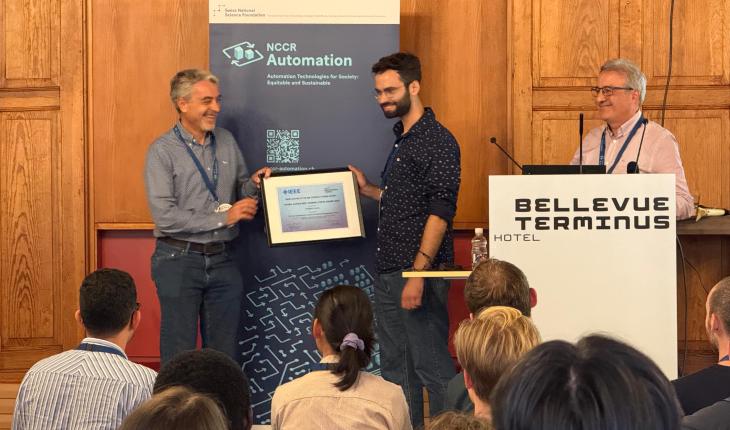“Dependable automation requires considering uncertainty”

NCCR Automation: Tell us how you found your way to the NCCR Automation!
Mahsa Rahimi-Siegrist: In my bachelor’s degree, I studied computer engineering to develop software. During one of my courses, a professor advised us (as computer engineers) to apply our knowledge to real-world problems, have a positive impact on society, and use our skills to benefit human life. Therefore, I continued my master’s degree in the field of industrial engineering. During my master’s degree, I wrote a paper accepted at the Production Economic conference in Austria. There, I realized that I have a great passion for working in an international academic environment while creating and building my technical-social projects. That is why I decided on a Ph.D.
What is your project about?
I work on improving the information of public transport passengers during a disruption. To do so, I model and quantify the effects of information on passengers’ behavior in a capacitated public transport network in such an event. This allows me to use information as a control tool. Based on my findings, I implement and develop multi-agent micro-simulation modules to simulate complex real-life scenarios in which passengers receive information at different times and locations. I believe that the approach is attractive, as it does not require massive infrastructure costs.

What exactly does that mean?
Usually, you don’t realize that there has been a disruption until you get to the bus stop and see or hear the announcement. But what if the passengers are immediately informed of after a disruption? I look at the difference in the delay that the passengers experience between these two cases. Interestingly, the outcome is not always obvious and depends on the perspective. A single passenger will benefit from having the information available as soon as possible. Yet if many passengers diverge from their usual route A to an alternative route B, they will cause congestions in route B. This will cause delays for those passengers who routinely use route B. In other words, there is a tradeoff between the early availability of information on disruptions and overall customer satisfaction.
How would you say your work fits into the NCCR Automation as a whole?
One important aspect, I think, is uncertainty. My project reveals uncertainties about the effects of information. Like with the passengers, the idea that something that seems beneficial from the perspective of a single user can actually be detrimental to the entire system is applicable to many areas related to automation. For automation to be dependable, this is something that we have to look into, especially in the context of building something like a smart city, which the NCCR plans to do as part of its Moonshot project.
Meet Mahsa as part of the #NCCRWomen campaign here.
Find out more about Mahsa here.



